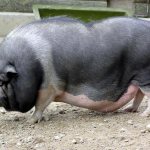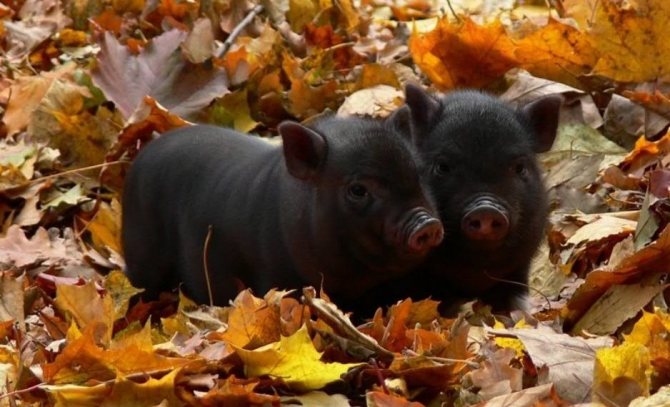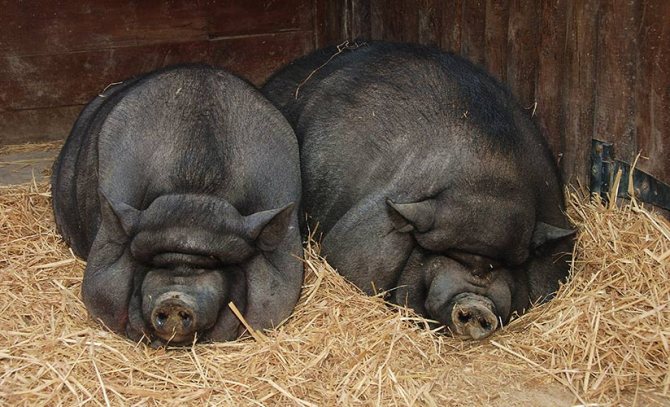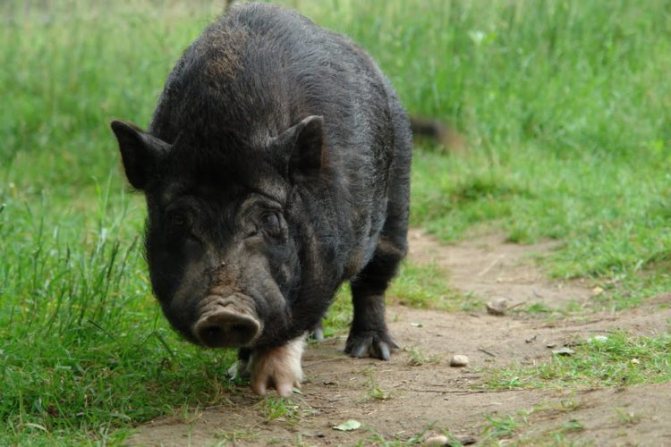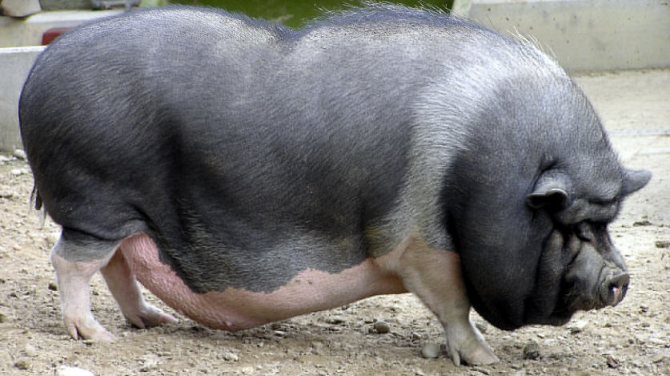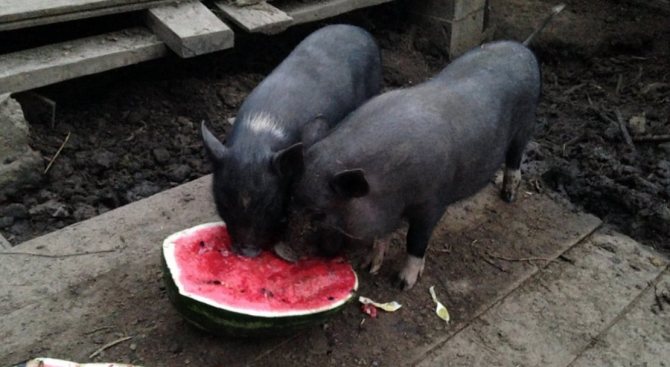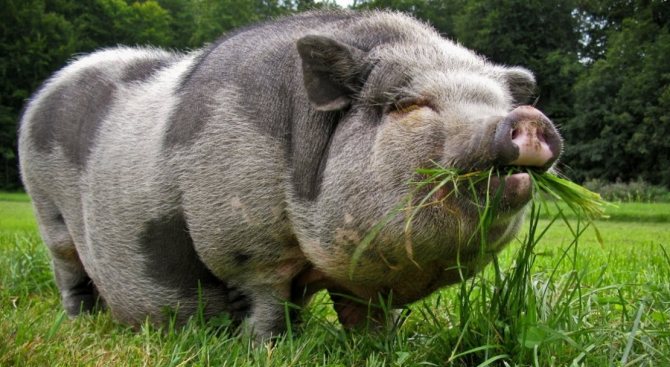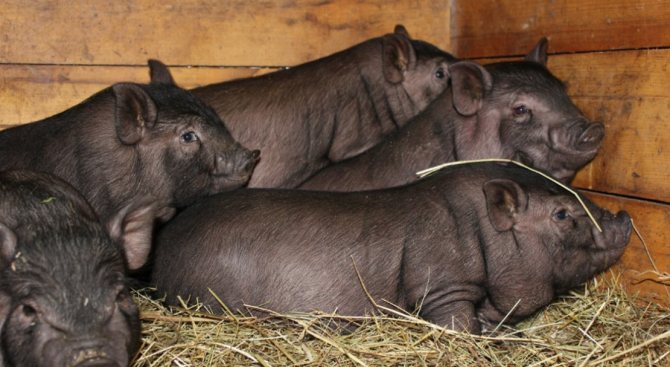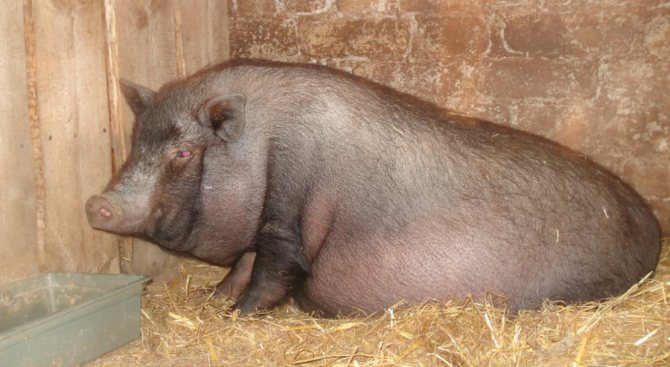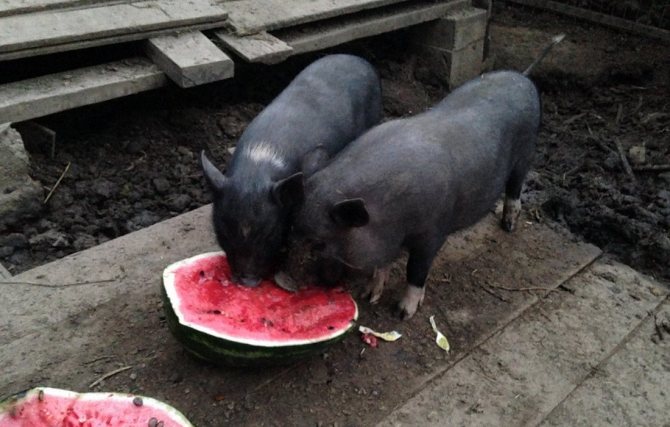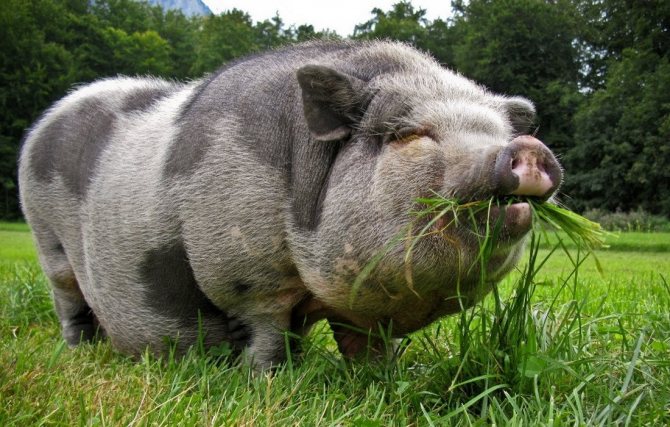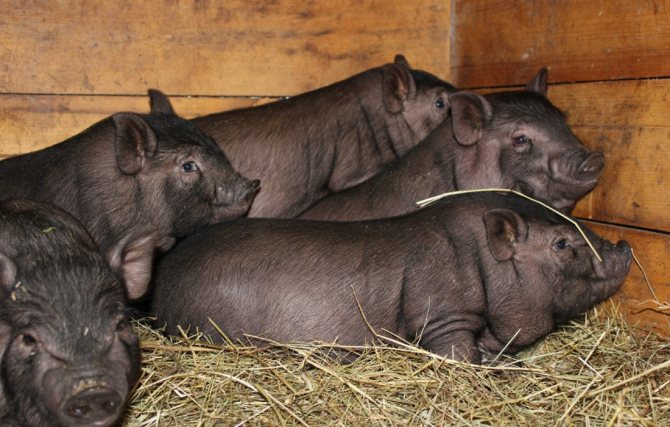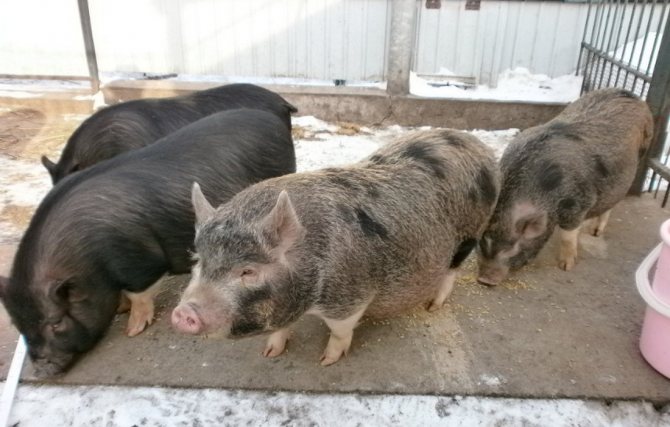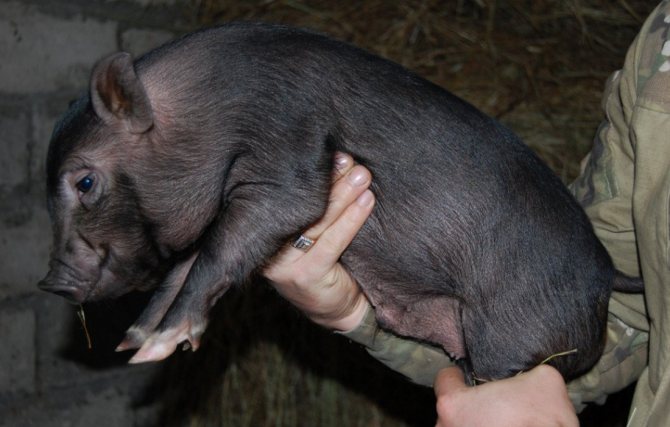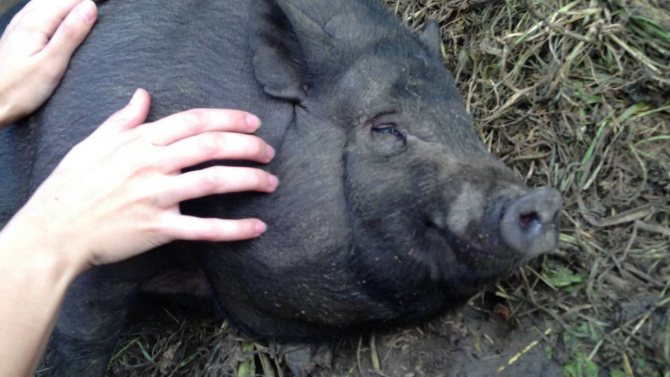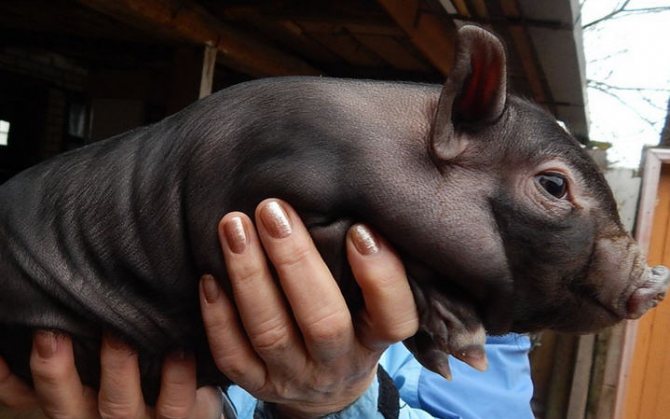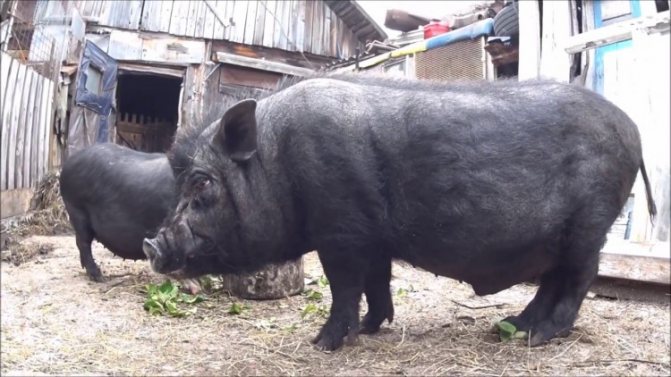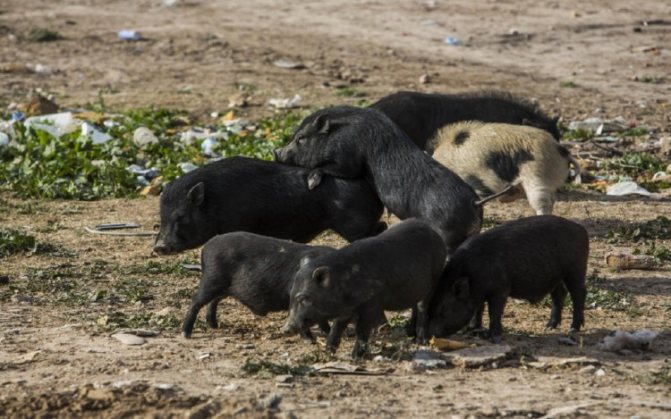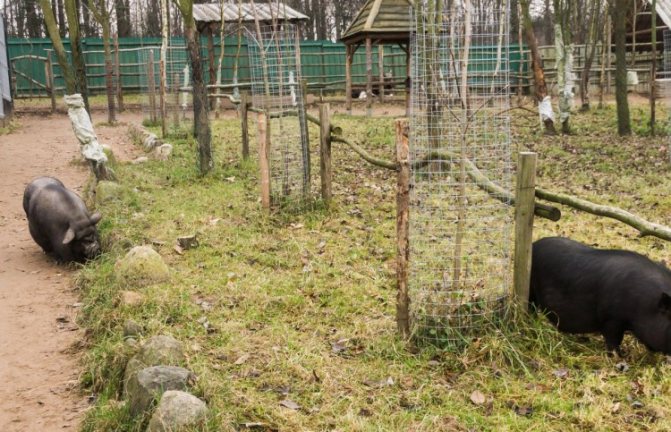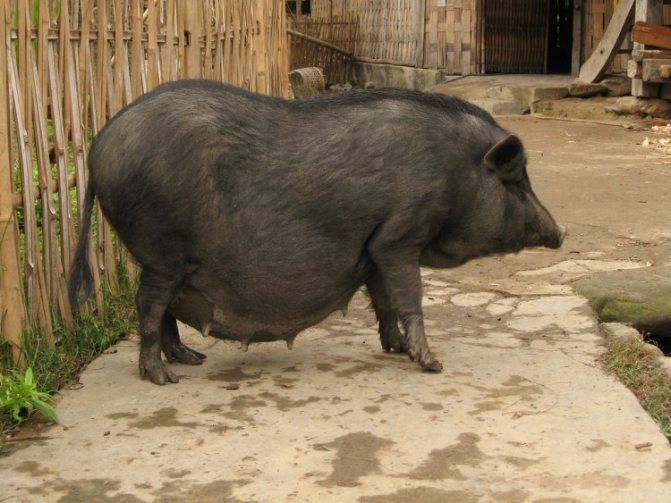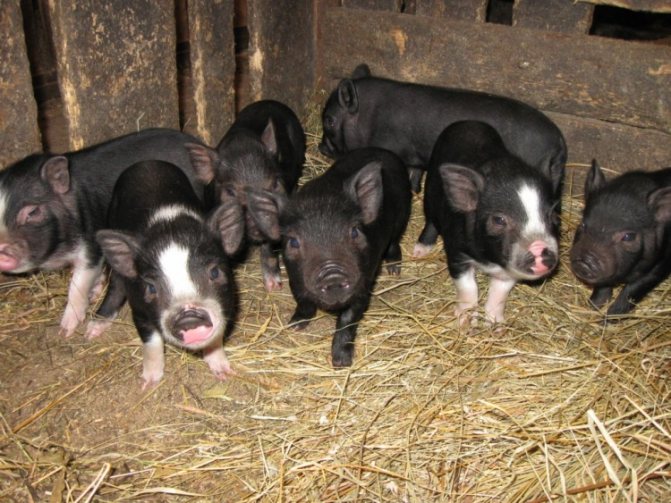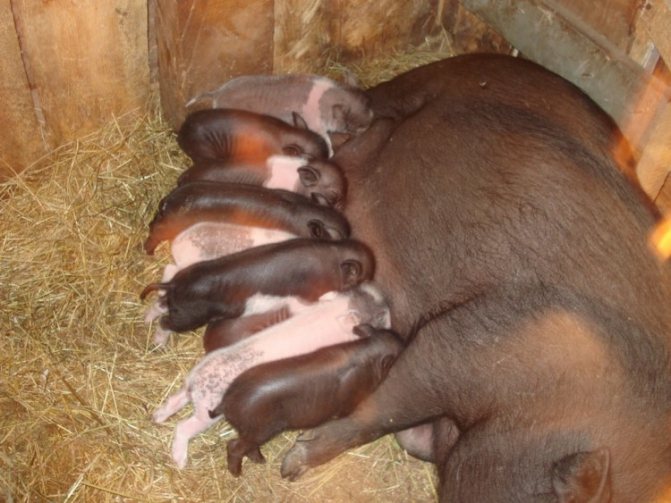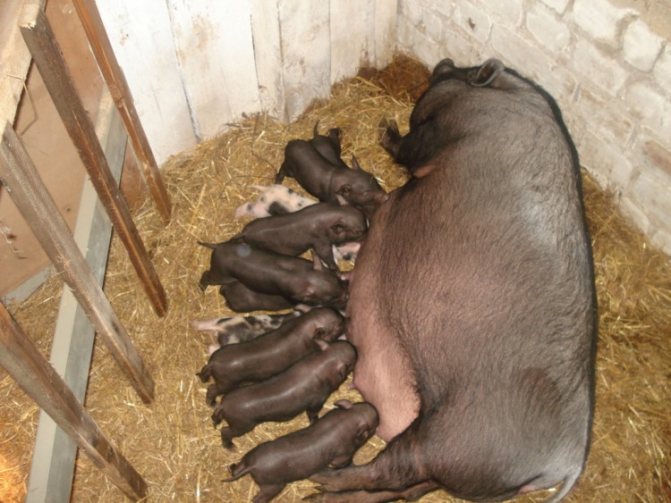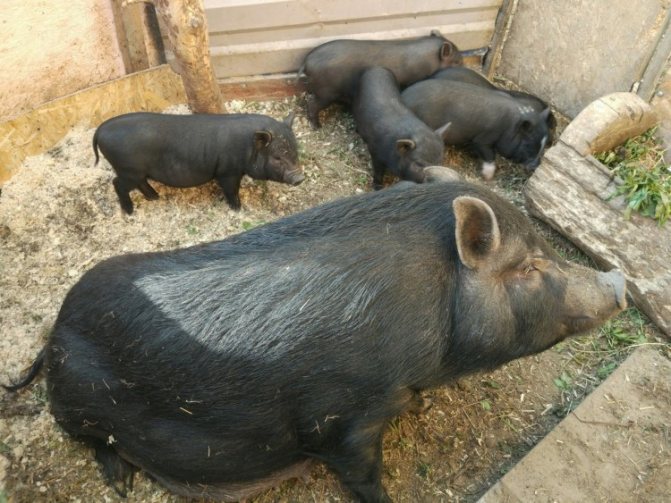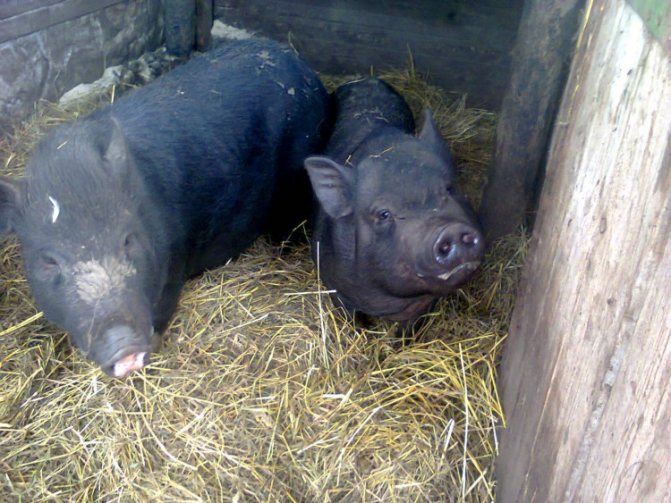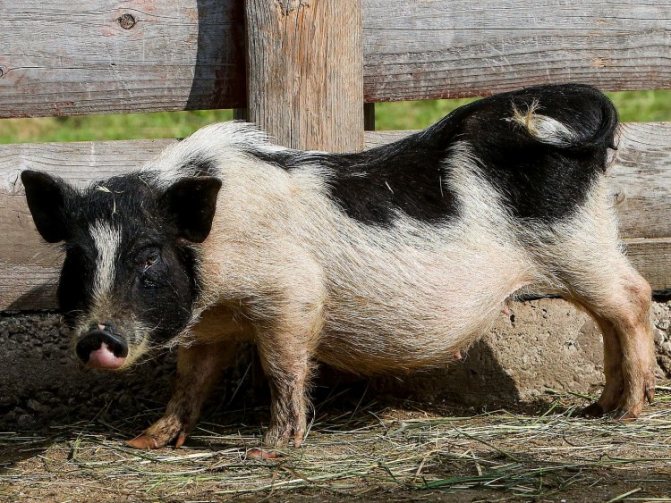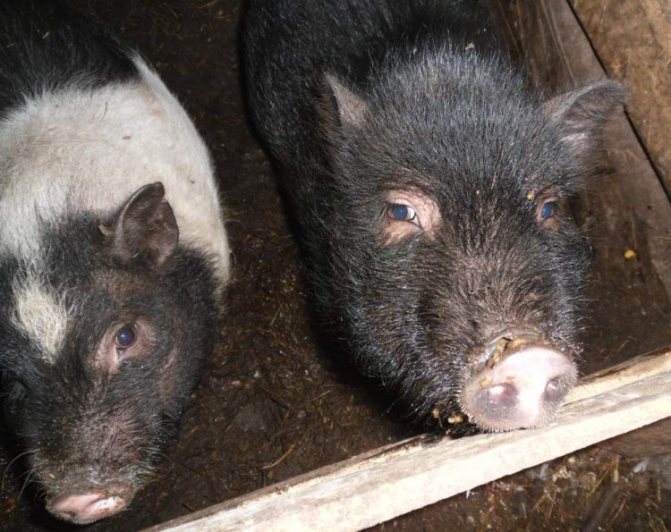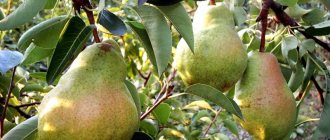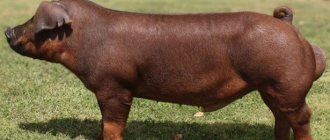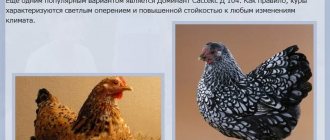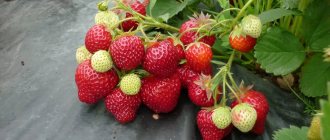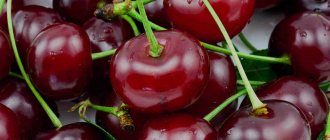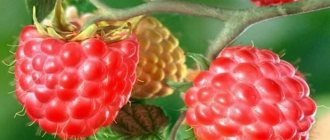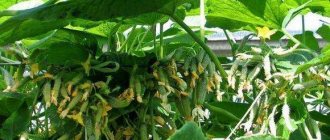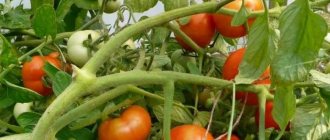Today, a large number of farmers are raising Vietnamese piglets. This breed of Asian pig has quite a few advantages. Vietnamese pig grows to large sizes, quickly gain the required body weight, and also quickly adapt to new conditions of detention and do not require special care.
On the territory of Russia, this breed is not officially registered, however, many breeders and zoologists call it very promising. Researchers see many advantages in it compared to animals that are raised in our area. In addition to the fact that they are not demanding on the conditions of detention, they have a fairly persistent and strong immunity and high quality meat. Early puberty is considered another significant benefit.
History of appearance
The Vietnamese pot-bellied pig, which is also called the Asian herbivore, first appeared in Southeast Asia. Only in 85 of the last century it was brought to other continents from Vietnam. That is why it received such a name, although it is more correct to say: Asian pot-bellied pig.
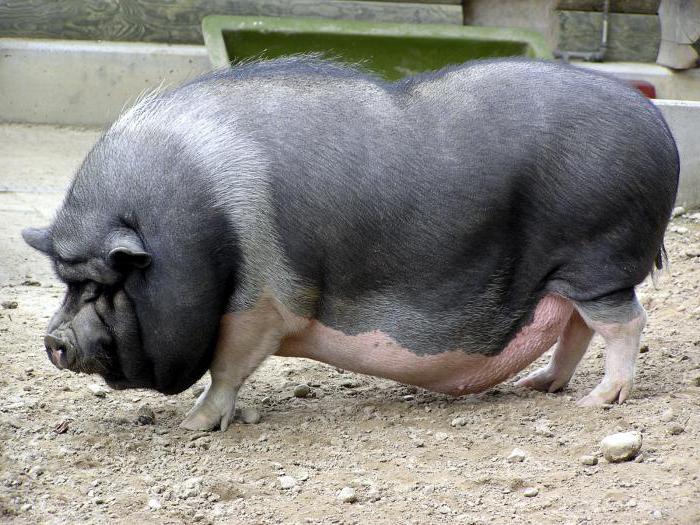
Initially, the breed was recognized only in Canada and the United States of America. Only after a while, farmers from European countries started breeding Vietnamese pigs. Only after this breed received recognition in Europe, it came to our country.
In Russia, the Vietnamese pot-bellied pig appeared relatively recently, but it immediately gained popularity among domestic farmers. Nowadays, it is more and more often bred on the territory of our country.
Description
Vietnamese pot-bellied pigs, the characteristics of which are given in this article, are not very large animals. Their height at the withers is no more than half a meter. They weigh from five to seven dozen kilograms. However, according to American standards, boars and hogs can even weigh 90 kilograms. Despite the fact that these pigs are herbivores, the male canines reach a length of 10 or 15 centimeters.
As for the appearance, the pigs of this breed are very funny. They have short legs and a wide body. The belly hangs, and this is very pronounced (hence the name). Their ears are small and erect.
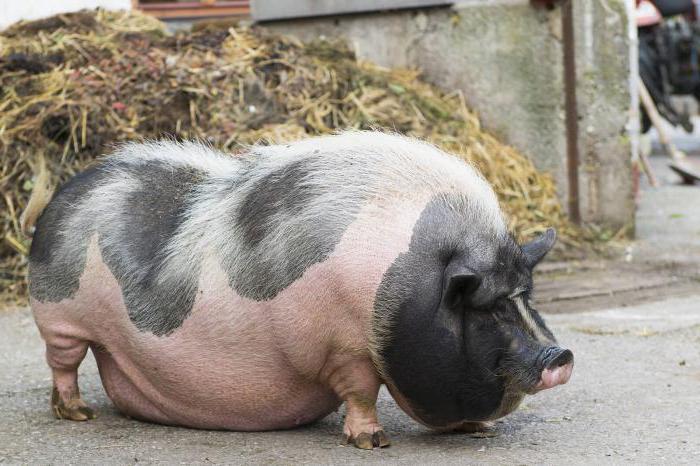

Most often, pot-bellied Vietnamese pigs, reviews of which demonstrate their excellent commercial qualities, have a black color. However, this does not exclude other color combinations. The bristles can be silver, white and even red. Sometimes several colors are mixed on the bristles at once, and this is the norm.
One of the features by which this breed can be accurately identified is the elongated bristles along the ridge, which in appearance resembles a kind of mohawk.
Description and characteristics of Vietnamese pigs
The main distinguishing feature of the Vietnamese breed is its rapid maturation, which is the reason for its rapid spread throughout the world. Piglets of this species are not afraid of either heat or cold. The only thing you need to protect animals from throughout their lives is drafts. Piglets react to them negatively and can get sick.
The name potato pig got its name for its characteristic appearance.On relatively short legs, a huge body with a belly hanging almost to the ground. Today, there are both white and black piglets on sale, as well as those with a marbled color. There are small ears on the massive head, the back is slightly concave. The stigma has a large number of folds, which is why it somewhat resembles an accordion in shape. Vietnamese pigs have been growing for 5 years, although this process slows down every year. Usually farmers send animals between 1 and 1.5 years old for slaughter. Only the female and the boar are left for breeding.
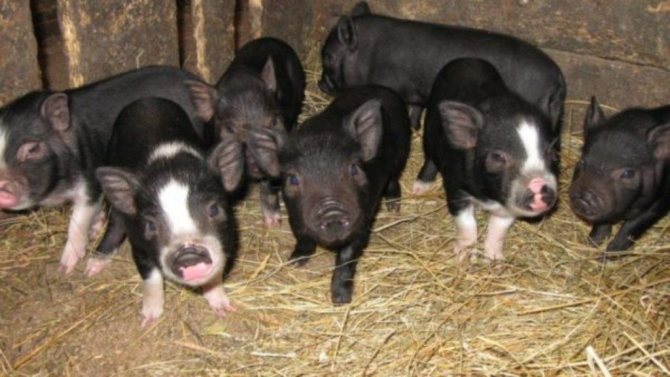

Health
Asian pigs have some health features that need to be considered before breeding these animals. Note that their immunity is very good. They are almost not susceptible to various diseases.
The disease that most often affects these animals is infection with helminths. However, this can be avoided if you follow the hygiene in the places of their breeding, as well as observe preventive measures where the Vietnamese pot-bellied piglets live. They hardly need vaccinations. At least in large quantities. Deworming should be carried out regularly, not only in order to protect pigs, but also to protect yourself, as piglet helminths can be very dangerous to humans.
Another problem is the reaction of the piglets' body to drafts. Small pigs are sensitive to strong gusts of wind, which can cause them to suffer from colds.
Food
According to reviews, representatives of the Vietnamese breed are very picky in food. They do not take everything that gets in their way into their mouths. Piglets generally do not taste poisonous plants and odd or spoiled foods. However, you should watch out for what the pigs eat, because the wrong diet can lead to weight gain and an increase in the layer of lard.
Feeding pot-bellied Vietnamese piglets, as experts advise, should be done twice a day in the summer. If they graze and have free access to fresh grass, then it is enough just to feed the animals with cereals, vegetables and fruits. Vietnamese pot-bellied piglets are fed three times a day in winter. Top dressing during this period is represented by beets, pumpkins and carrots.
Feeding features
When feeding animals, you must adhere to the following principles:
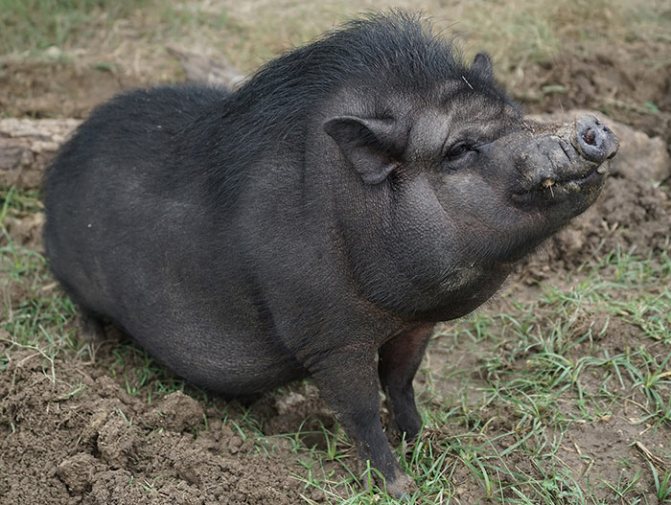

- The basis of the diet is plant foods. In the summer, pigs should receive a lot of fresh grass; for the winter, straw from alfalfa and clover is harvested for them, long-stored root crops.
- Animals need fruit, they love boiled potatoes.
- For a quick weight gain, the menu needs to be enriched with cereals. They are pre-ground and boiled or steamed for several hours.
- The pregnant uterus should be given boiled eggs, whey, and vitamins should be mixed with food.
- Number of feedings in summer - 2, in winter - 3.
- Household waste should not be given to the pig. Such food leads to rapid weight gain, but after slaughter, the owner will receive a lot of fat and will not see the meat.
Products
What to feed Vietnamese pot-bellied pigs with? Since they are herbivores, you should regularly give them grass. She is the backbone of their diet. In the winter season, it is replaced with hay. You also need to add apples, zucchini and pears to your food. They contribute to the full development of animals.
In total, the proportion of fruits and plants in the diet of lop-eared pigs ranges from 50 to 70%. The rest is grain crops such as wheat, rye and barley. Corn, according to experts, is a product that can lead to obesity, so it should not be given to piglets in large quantities.
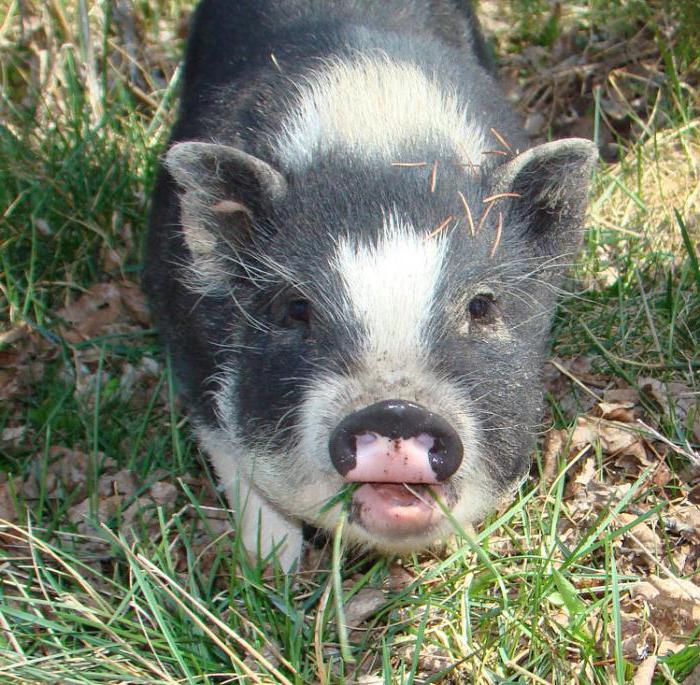

In winter, fresh grass is replaced with hay. It is best to harvest it from clover, sweet clover or alfalfa. These plants are very tender and succulent, so they are easily digested by pigs.Dry hay and straw are contraindicated for them.
Another option is cereal porridge. It is very useful for small pigs. Top dressing in winter is vegetables that should be fed raw. The absence of heat treatment will preserve all vitamins. 10 days a month, fish oil should be added to the feed in the proportion of two tablespoons per bucket.
As many reviews say, Vietnamese pigs eat pot-bellied pigs for food and feed. With it, you can quickly fatten pigs. It can be purchased ready-made or prepared yourself. In the mixes that are sold in stores, all the ingredients are in an optimal ratio, which ensures a balanced diet. If the food is prepared at home, then you need to know how many ingredients are added to it.
The share of barley in compound feed is 40%, wheat - 30%, peas, corn and oats - 10% each. However, compound feed allows you to quickly gain weight, so you need to carefully monitor the nutrition of the piglets in order to prevent them from obesity.
To grow a pig, whose meat will be used for cooking bacon and other products of this kind, according to the advice of experts, you need to feed it with compound feed made from barley, oats, peas, corn and wheat, combining all this with fresh herbs and vegetables. This will allow to grow an individual weighing as much as one hundred kilograms within 4-5 months after its birth.
Testimonials
Alexander
I have been raising Vietnamese pigs for a long time and am very happy with my choice. These pigs give birth to a very large number of children. I breed them for sale. I want to say that this is a very profitable business. They are unpretentious in nutrition, and in care too. In the summer, I keep them on the street all the time. Fortunately, I live near a pond, so the animals are very comfortable there and there is a lot of space for a walk. It is during the walk that they choose the right grass for themselves.
Andrew
My brother and I have been farming for a long time and now I decided to get Vietnamese pigs. We took at first 8 pieces, but then their number increased markedly. We did not take care of the newborns, we only checked their condition from time to time. Animals feed on grass, hay and compound feed.
Oleg
On my farm, these pigs have long settled down. For 5 years I have been creating optimal living conditions for them. In the barn they have a bed of hay, which I change periodically. I arranged the floor and walls, I heat the room with a stove. Thanks to the creation of such conditions, all my animals do not get sick, they grow strong and healthy.
Irina
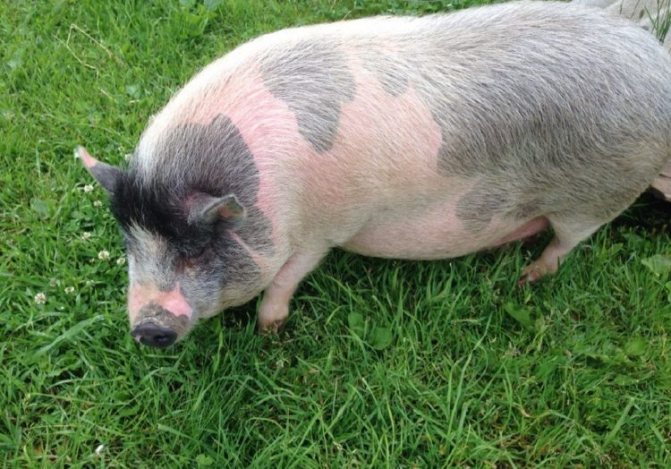

She kept Vietnamese pigs for a long time until they found ASF in our country and forbade private owners to keep any pigs at all. Before that, there were from 50 to 70 heads. There would be an opportunity, I would start this breed again. The health of the bellies is excellent, they get sick very rarely. At first, during farrowing, I literally lived in a pigsty, but over time I decided that I was sorry for myself. If a cattle mother cannot reproduce herself, then the place of such a mother is in the sausage. And it turned out that many of my pigs and goats can do without me. I just came in the morning and was happy for the addition. Now only the kids have to rejoice.
Michael
We do not keep Vietnamese pot-bellies for long. First, they took one piglet for fattening. They castrated and began to grow. The piglet turned out to be very smart, her daughter was even able to teach him commands. But after all, already a hog, where to keep him? We looked at this case and decided to breed Vietnamese pigs. We bought another hog and a pig. The first boletus has already been slaughtered for the New Year, and these live. It's funny to watch them. But you also have to bury the dug holes. Pigs, going out for a walk, dig holes in their favorite places every day. They have fun like that.
Darina
A year ago, she brought in Vietnamese pot-bellied pigs only to provide the family with meat, not for sale. I took two pairs from different sellers.One pair turned out to be of poor quality: small, with poor conformation. The boar from this pair was slaughtered quickly, and the pig was waited for farrowing. So after farrowing, she lay down on her stomach and did not let the piglets near the udder. As a result, out of 6, only 3 survived. Either she crushed the others at night, or they died of hunger, unable to settle down to the second pig. The second one was older, farrowing a month earlier. This turned out to be a good mother. On the night of farrowing, she drove the other three out of the room, they then lived outside for another half a day, until the farrowing pig let them back. She also brought 6 piglets, fed all of them, all survived and grew large. Now I have a couple of high-quality pigs: this one is a good queen and a boar with an excellent conformation. Another pig was slaughtered along with the piglets. Only the uterus after the piglets are 2 months old and the piglets at 4.
Video
Content
It is known that Asian pigs easily adapt to the Russian climate. They are unpretentious in content. However, it is important to know some points that will help to properly equip the pigsty and prevent any problems from arising.
Here, pig breeders advise the following:
- The maintenance of Vietnamese pot-bellied pigs is to create a pigsty that is comfortable for them. This means that it is necessary to provide them with a room with stone or brick walls, concrete floors in it. The next step is to cover the area with wood or thick straw in the area where the piglets will live. And in the place where they will relieve themselves, carry out low tides and provide free access for the trolley for removing manure to the "toilet".
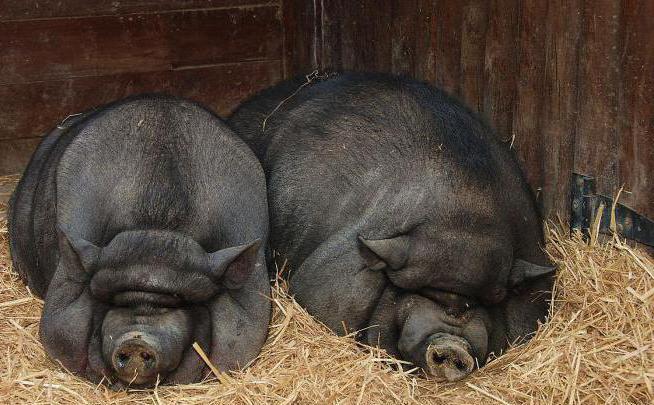

- It is important to provide a spare room, because sometimes it becomes necessary to separate some individuals from each other. For example, a sow with newborn pigs should be in a different pen, and not where the rest of the Vietnamese pot bellies live.
How many individuals to keep in one pen does not matter. Since the representatives of this breed are quite friendly and sociable, you can arrange them in twos.
Conditions
The main condition for keeping young and adults is the constant maintenance of cleanliness and warmth., regardless of the number of pigs and the purpose of their breeding.
For adults
In order for adult animals to be profitable and convenient to keep, it is important to adhere to the following rules and recommendations:
- If you plan to keep and breed pigs for a long time, it is best to organize for them a flock of bricks or foam blocks... Otherwise, a sturdy wood shed will do. There should be no drafts in the room.
- Flock floor is best made of concrete, and on top of it, make a flooring of wood, which will take about three quarters of the entire area. It is also important to prepare a small drain to quickly remove water and pig waste. It is also recommended to lay a thick layer of straw over the deck.
- It is necessary to make n to the flockan outbuilding for walking in the warm season... You can enclose it with a fence or mesh. Inside such an enclosure, a swimming pool should be organized, as well as feeders, drinkers and combers should be installed.
- In cold regions, it is recommended to equip in a pigsty for 50 heads or in a barn, additional heating system.
- If you prepare partitions for the separate keeping of pigs, each animal will need to allocate at least five square meters of area.
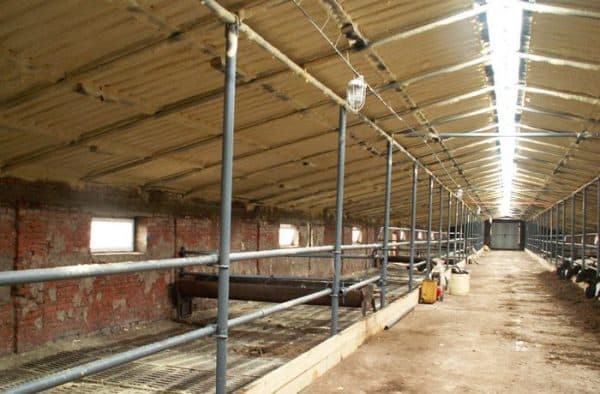

Option for a pigsty device for a farm.
For piglets
For piglets for the first three to four months, you can organize a common flock... It can also be made of bricks, foam blocks or wood. It is important that there are no drafts and dampness in it. It is recommended to make straw bedding as thick as possible so that young animals have the opportunity to take shelter with it when the air temperature drops. Read about the farrowing of Vietnamese pigs here.
It is important to observe sanitary and hygienic standards in order to prevent the occurrence and spread of infections and mold.
Activity
According to the reviews, Asian pigs should move as much and as often as possible. This is to prevent them from gaining excess weight. A sedentary lifestyle will cause the fat layer to increase. Therefore, you need to provide them with a walking area. It should be located near the pigsty.
A medium-sized hole should be dug within this area and filled with water. Mud baths will help the pigs cool off during hot seasons and keep insects away. Ensure that there is a tree or log on which the piglets can scratch their sides as well as their back.
Reproduction
A sow's pregnancy lasts for three months, three weeks and three days. In the first litter, there are only five to ten piglets, but next time there may be up to 20 of them.
Vietnamese pot-bellied piglets, which weigh no more than half a kilogram at a newborn age, are growing rapidly.
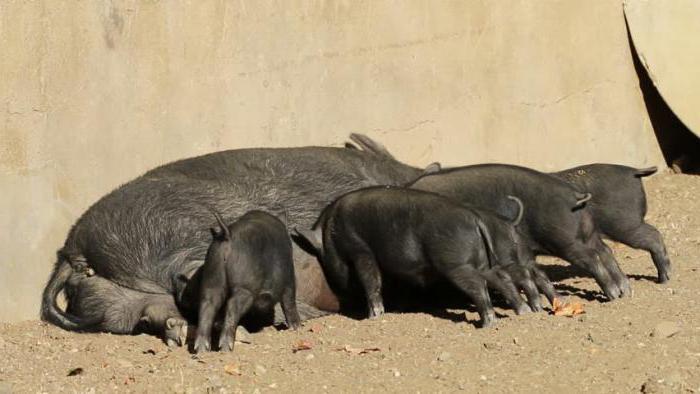

Prepare a warm and draft-free place before farrowing. By the behavior of the pig, you can understand when it will give birth. She worries, in some cases refuses to eat, collects hay in a heap and prepares a nest from it.
A Vietnamese sow gives birth for three and a half hours. It is important that at this moment the owner is near. Piglets need colostrum as soon as they are born. You need to give it within an hour, because piglets are born with a very small supply of nutrients.
Breeding
Raising Asian pigs is not very difficult if you know how it is done. Piglets reach sexual maturity at the age of four months, which means that they are already ready to reproduce. True, there is one caveat - according to the advice of experts, by the time of mating, the pig should weigh at least 30, or even 35 kg. So it's better to wait a couple of months and mate at the age of six months.
The breeding of Vietnamese piglets is carried out for two purposes. One of them is getting pigs for meat. In this case, they are knitted at an early age, and there are no special requirements. However, there is a second option - breeding.
To get strong, strong offspring, you need to make the first mating at the age of eight, or even ten months. The fact is that by this time the pot-bellied pig not only grows up, but also matures. Her mammary glands are fully developed, which means that it becomes much easier for her to feed the offspring.
Castration of Vietnamese pot-bellied pigs is carried out in the first one and a half to two months of life.
At 7 months
Vietnamese piglets at 7 months reach a weight of 60-70 kg. From this age, the monthly increase is on average 10 kg, and the daily increase is about 300-350 grams.
The mass indicators of animals of this breed are shown in the following table:


Time for slaughter
Age 7 months in industrial pig breeding, it is considered ideal for slaughter in order to obtain a quality meat product. In addition, by this time the animal has accumulated a fat layer.
However, remember to provide your pigs with proper nutrition from birth. Only in this case, by the age of 7 months, it will be possible to count on the desired ratio of meat and fat.
Can animals be left
As a rule, adult gilts that have crossed the threshold of 7-8 months are left for reproduction.
One sow can produce two litters of 16-18 piglets per year.
Breeding the Vietnamese pot bellies is a lucrative business. Animals are unpretentious in food, however, it is important to ensure that their drinkers are always filled with fresh, clean water. And the good immunity of these pigs is an added benefit.
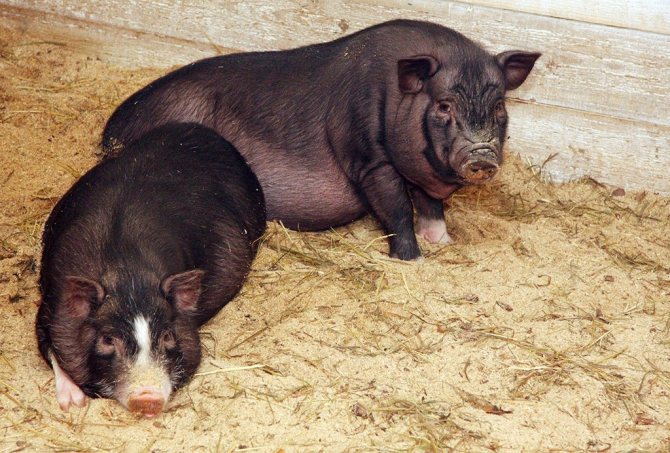

Rearing offspring
Vietnamese pot-bellied pigs are excellent mothers, according to their owners. They take great care of their offspring and try to feed each piglet. However, they do not always have enough nipples for everyone, so little pigs are fed from ordinary baby bottles regularly, every hour and a half. Both cow's and goat's milk are suitable for these purposes. However, you cannot accustom them to feeding from a bottle with a nipple, and feed should be added already in the second week of life. Be sure to put drinking water where the piglets are - they need to drink regularly.
How to feed new-born tumblers? As the pig breeders advise, ordinary grass and hay are suitable for these purposes. You can brown some corn, wheat, or barley grains. In this state, the grain acquires a sweetish taste and is liked by animals. There is another plus of such food - piglets are accustomed to solid foods, and their gums are massaged.
Porridge is an essential food for small Vietnamese pot bellies. The diet of these animals includes cereals from oats and barley. First, they are cooked with milk, and then with skim milk. The older the piglet becomes, the more feeding it should use. The amount of milk, on the contrary, must be reduced.
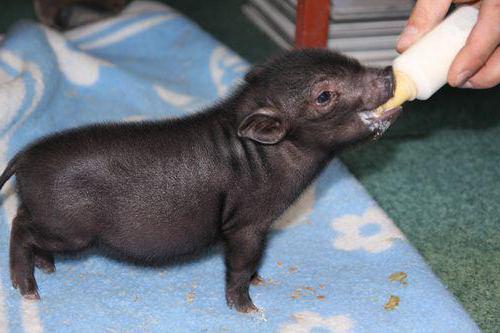

Weaning of offspring from a female should be done at the age of 2.5-3 months. Continuing to feed piglets with sow's milk can adversely affect their health. Immediately after weaning is done, you need to start the selection of feed. The share of protein in them should be at least 20%, fat - from five to six, fiber - only three. By the age of 4 months, the protein content should be increased to 30 or 40%. It all depends on the size and development of the pig.
Since some pigs are raised for lard, others for meat, and still others for offspring, each one needs to make his own diet. This will achieve the desired results. But in any case, there are foods that all piglets should consume. These are compound feeds consisting of bran, oats, corn and barley, root crops and other vegetables, as well as grass.
Judging by the reviews, piglets should never get hypothermic, as they can get sick. Therefore, it is necessary to do everything possible to keep the ambient temperature above 25 degrees Celsius.
Feed recipe
Concentrated feed 4-1.5 liters should be displaced from 0.5 dessert spoon of table salt. Pour boiling water over 8-9 liters, let stand up to 12 hours.
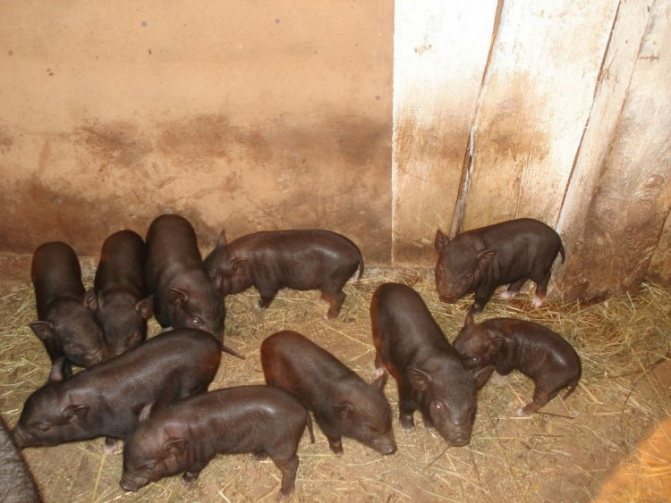

Add to the cooled mixture: healthy fish oil, various vitamins, Prelak additives, etc.
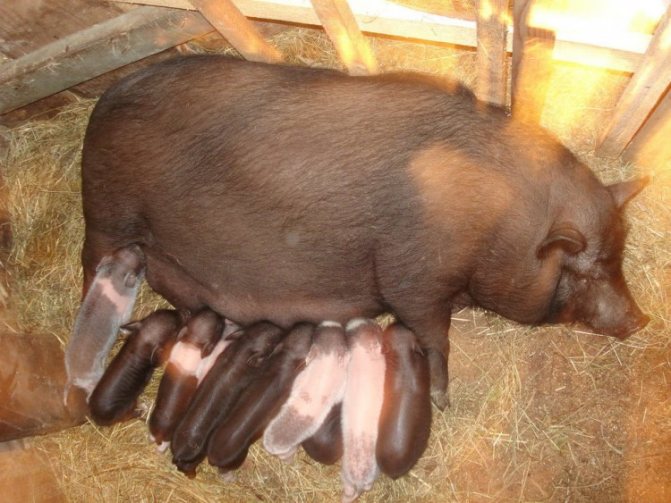

One bucket of this feed is 1 out of 2 feeds for 3 sows.
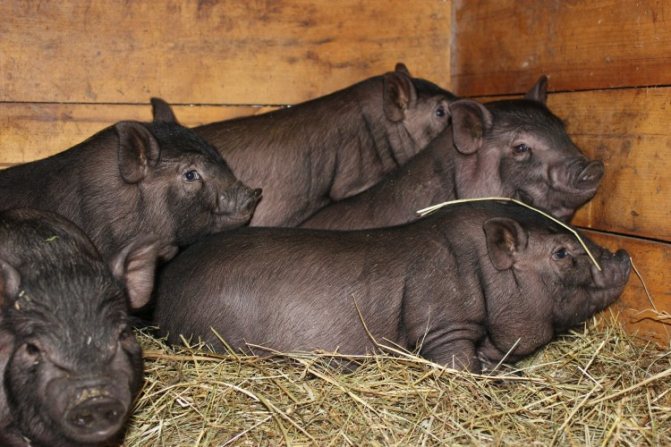

For nursing mothers, be sure to add dairy products, eggs, vitamins and whey.
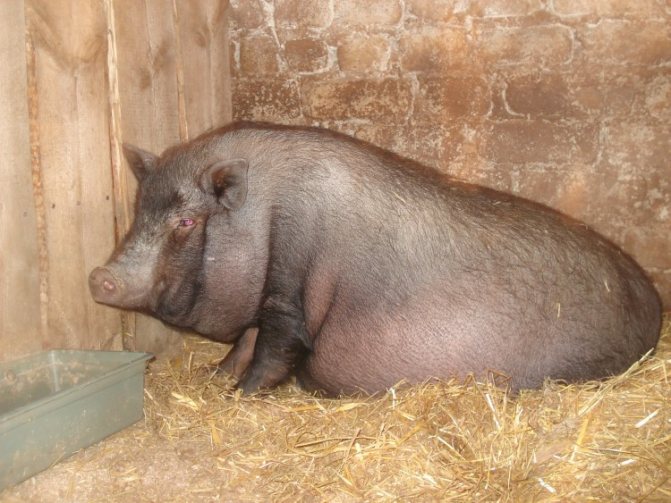

Feed the piglets 2 times a day, 1.5 buckets of nutrient mixture for 10 piglets. An excellent feed for piglets will be porridge (thicker) from compound feed. This will improve their digestion.
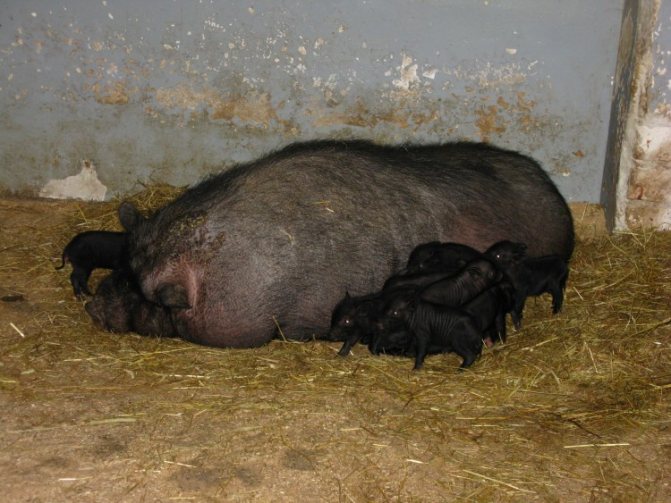

Provide vitamin foods: legumes, squash, carrots, pumpkin, and hay.
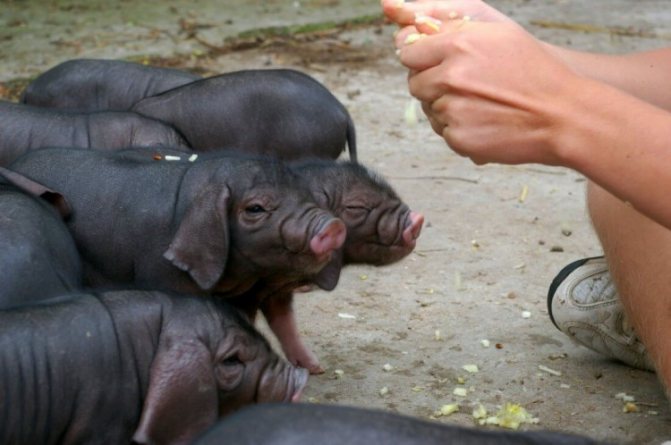

Heat treatment of feed will destroy vitamins, but boiled potatoes can be used up to 15% of the diet.
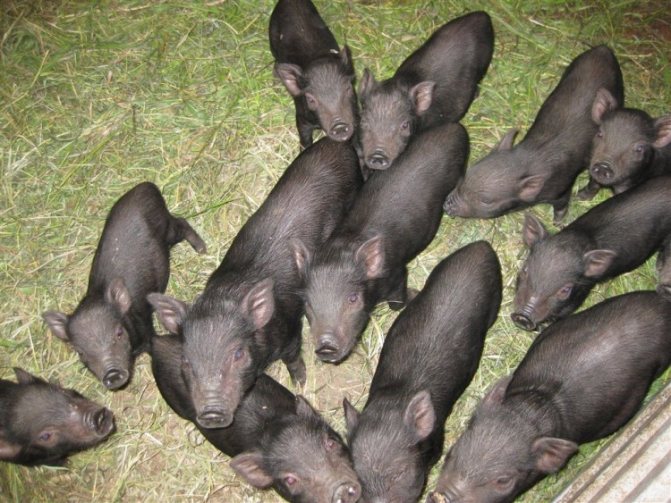

If the recommendations are followed, the guinea pigs will gain weight well and grow up healthy. The photo shows Vietnamese pigs, which can be a profitable business to breed.
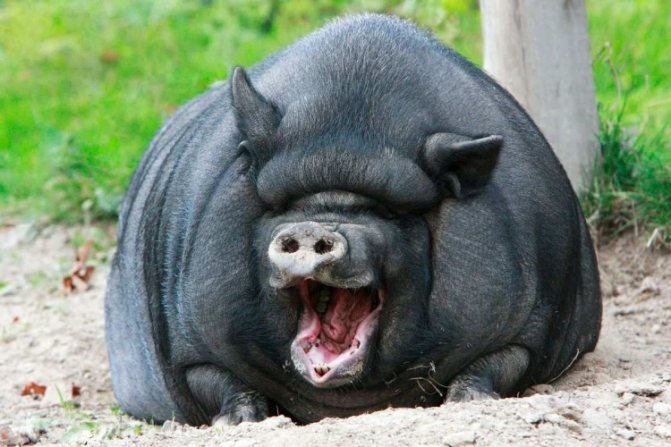

Differences from other breeds
Looking at the pigs discussed in this article, one cannot help but notice that they are very different from their other brethren. However, this applies not only to appearance. The Vietnamese pot-bellied pig breed is distinguished by quick-wittedness and calmness. What else are the differences? First of all, in character. Their disposition is very docile, they do not make noise for no reason. Their attitude towards offspring is also completely different. The sow never eats her piglets, and also feeds the litter without problems.
Another difference is cleanliness.Vietnamese piglets and pigs clearly separate the living area and the place where it is necessary to relieve themselves in the pigsty. It is very easy for them to get used to going to the toilet in a certain place. They grasp this information as quickly as cats. In addition, the suffocating odor that comes from an ordinary pigsty never appears where Vietnamese piglets live.
Advantages over other breeds
There are a number of benefits that Vietnamese pot bellies have. Reviews about them usually contain the following information:
- Piglets have innate immunity, which is why their survival rate is much higher than that of other breeds.
- The female is prolific. On average, she brings about 12 piglets at a time, but sometimes their number can increase to almost two dozen. The Vietnamese pig gives birth twice a year.
- Asian piglets grow faster, their reproductive activity begins at four months of age.
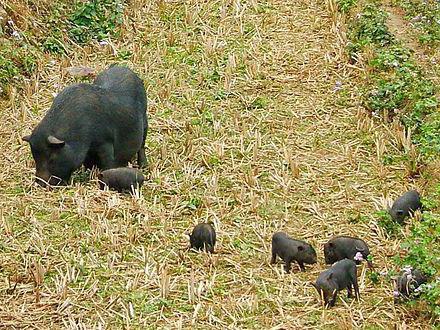

- The meat of Vietnamese pot-bellied pigs, in contrast to the meat of their counterparts, contains several times less cholesterol. It is more juicy and tender, suitable for people who suffer from heart disease. In addition, it can become one of the dishes on the dietary table.
- The meat of Asian pigs makes up about 70-80% of the total carcass weight. This means that an individual weighing 100 kilograms can produce at least 70 kg of meat. Impressive performance, isn't it?
Complementary feeding introduction table and weight gain rates by age


The process of weaning babies from their mother should be extended over several days. This will prevent the sow from developing mastitis and the piglets will feel good. Preventive vaccinations can be given at the age of forty days Vietnamese piglets
from helminths with drugs brovandazole and others.
Growing and fattening Vietnamese pot bellies
pigs
can be a very profitable venture for the farmer. But to accomplish this, of course, you should plan everything, soberly assess your capabilities and prepare to devote time and attention to your wards. Only in the presence of all of the above can you expect a good return from this interesting, but painstaking activity.
How to choose a Vietnamese pig?
In order not to be deceived when buying a Vietnamese pig, you need to follow the advice of experts. This will allow you to select the healthiest pigs, as well as save yourself from further problems in their breeding:
- It is necessary to examine each pig in the litter and select the most developed individuals in physical terms. He must be strong, knocked down. Their limbs are most often widely spaced.
- The head is wide, on the pug there is a specific bend of the nasal bones, which makes the piglet look like a pug. The pig's bristles are even and smooth, the eyes shine, the pig is very active and cheerful, she has a good appetite.
- It is also necessary to examine the piglet along with its sow. In a month, he weighs about three and a half kilograms, and the female feeding him looks emaciated, her milk lobes are saggy. If this is not the case, then either the pig is older, or it is not his sow.
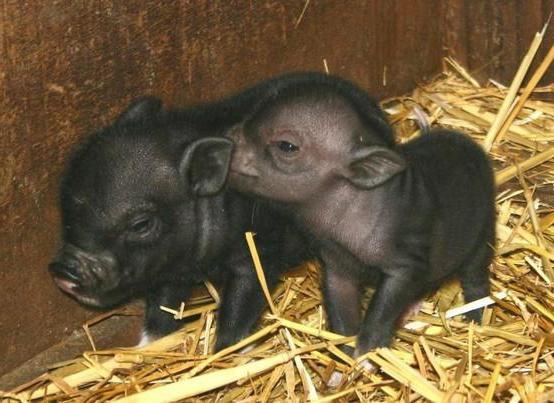

However, it is not enough to know what to do when choosing a pig. It is necessary to have knowledge of what not to do:
- Buy two piglets (female and male) from one litter. This can lead not only to diseases of their offspring, but also to degeneration.
- If there is only one breeding boar on the farm, then the probability of closely related crossbreeding increases to almost one hundred percent. Better not to buy a pig from such a farm.
Once the choice is made, it is important to know what he was fed on the farm. You cannot abruptly change the diet, because the animal may feel bad.
Pig selection rules
In order to raise healthy animals capable of producing healthy and strong offspring in the future, it is necessary to take a responsible approach to the acquisition of piglets.
See also
What feed additives are there for pig growth, rules for selection and useRead
First of all, they pay attention to the following parameters:
- Ask the seller to show you the sow from which the piglet is being sold.
- Inquire about the weight with which the animal was born, and track its dynamics over 10 days.
- Evaluate the appearance of a pig - a healthy animal has well-developed muscles, strong, widely spaced legs, smooth hair and shiny eyes.
- Ask what the pigs were fed.
You should not buy animals if there were more than 12 of them in one litter and if the farm has one boar for several sows.
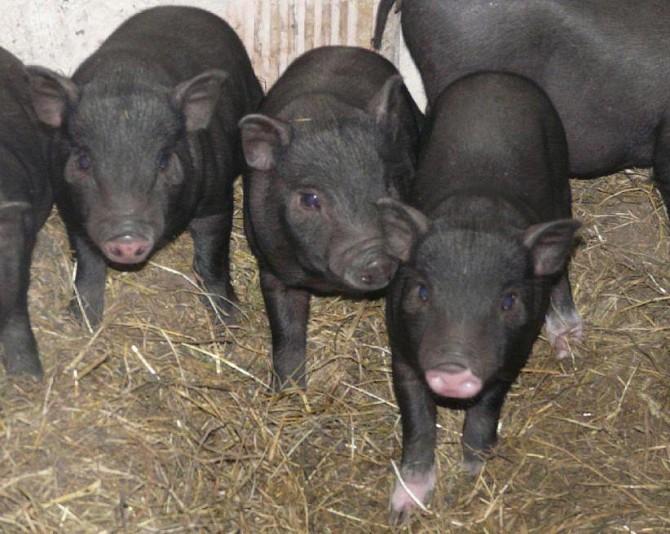

Raising Asian pigs for business purposes
Black Vietnamese pot bellies, as well as other varieties of Asian pigs, are fast growing animals whose meat is highly prized. Not surprisingly, they are bred for business purposes. However, deciding to engage in such an activity, it is necessary to study the rules of the pork market.
First, the weight of the individuals that are planned to be sold must reach more than one hundred kilograms. Smaller animals are almost impossible to test for any disease, so wholesale buyers don't take risks. At the same time, there is more meat in carcasses weighing up to 50 kg, and lard, respectively, less.
Because Vietnamese piglets have delicious meats that are used to make bacon, cuts and kebabs of all kinds, they can be sold in natural food stores. If the farm contains not only pigs, but also birds, and in addition grow vegetables, then it is possible to open your own business.
Interestingly, the maintenance and care of Vietnamese pot-bellied piglets fully pays off one year after the start of sales of individual individuals or their meat. So, judging by the reviews, this is a very profitable business.

